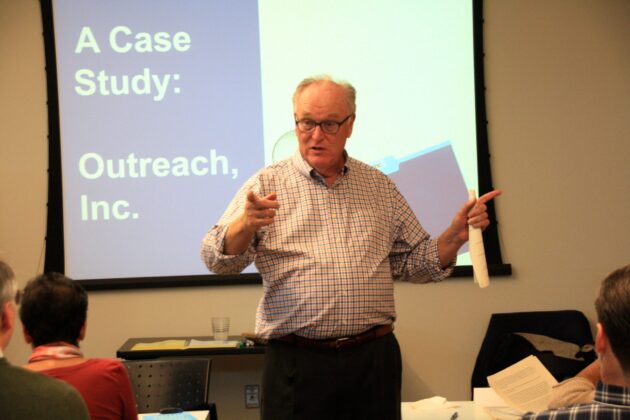
The stunning levels of negativity, distrust, and cynicism evident in the political sphere this fall stand in stark contrast to the spirit I encountered recently in three days of workshops with staff and board members of New Jersey nonprofits, courtesy of the Dodge Foundation. I couldn’t help but wish that one sector could learn from the other.
I was reminded of a story I tell in my book The Social Profit Handbook. Business, political, and environmental leaders had gathered in the Hoboken Terminal for an event called The Waterfront Conference, about the future of the New York/New Jersey Harbor. Governor Jim McGreevey was the keynote speaker, and I was asked to introduce him.
Rather than cite biographical details already known to everyone in the audience, I decided to read a poem titled “In Those Years,” by Adrienne Rich. The poem is a powerful indictment of a world driven by a focus on “I” instead of “We.” As I wrote, I felt that I was handing the perfect post-9/11 metaphor for our region to the governor.
Suffice it to say the metaphor did not show up in his talk, and I was feeling sheepish for bringing idealism, let alone art, into an event where hundreds of millions of dollars were at stake in the years ahead. But the executive director of an environmental nonprofit said to me as we were leaving, “That poem was the best part of the morning.”
There it was — the habit of the nonprofit sector, as under-resourced as it is, to think about the way the world ought to be.
Which brings me back to the Dodge Board Leadership series. We kick it off with a lesson in formative assessment — the kind of assessment whose purpose is to improve performance, not judge it after it happens.
We begin with the mission and sense of purpose of the various organizations in the room and ask, “What would it look like if we succeeded?” Then “what would it REALLY look like?”
Participants begin work on a qualitative assessment rubric – a tool that gives them whatever space they need to describe outcomes, as specifically as possible, along a spectrum. At one end of the spectrum, the “bottom,” is what they don’t want to see – the level of performance that would disappoint them. At the top end are the outcomes they desire and the actions they need to do to get there.
As I tuned back into CNN for the final days of morbid fascination with a political process that feels like it has run off the rails, I found myself thinking that everything I was seeing was at the bottom of some unwritten rubric.
I imagined some godlike facilitator saying, “Wait. What is the purpose of the political process? What is the purpose of democracy? What would it look like it we succeeded? If we are planning backwards from that vision, who needs to do what?”
I acknowledge that formative assessment is much more manageable on a small scale and when it is driven by a single mission. Yet when I look at our country’s fractured civic and political culture, I yearn for some way to apply its principles.
Could the public sector learn what the most effective practitioners in the nonprofit sector demonstrate all the time: that done collectively, formative assessment brings people together, and it shapes outcomes?
Bernie Sanders called for a revolution. What if the only weapon needed was a rubric?
David Grant is the author of The Social Profit Handbook: The Essential Guide to Setting Goals, Assessing Outcomes, and Achieving Success for Mission-Driven Organizations. He is the former Dodge Foundation president, a facilitator in the Foundation’s Board Leadership technical assistance workshop series, and a regular contributor to the Dodge Blog.
